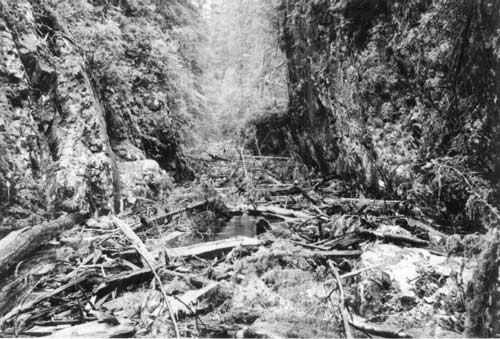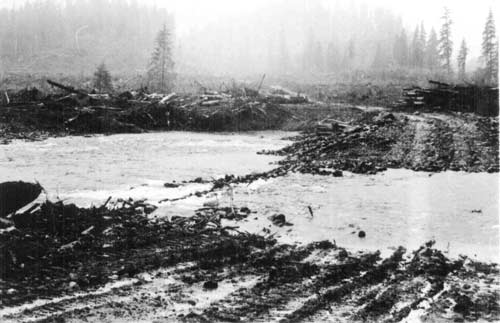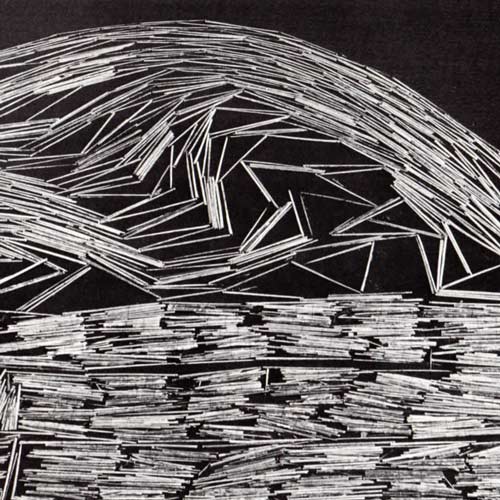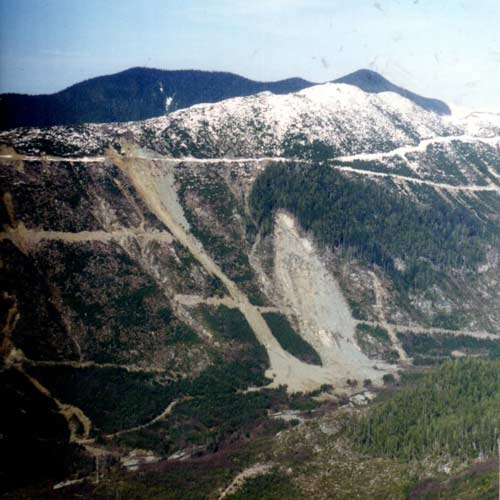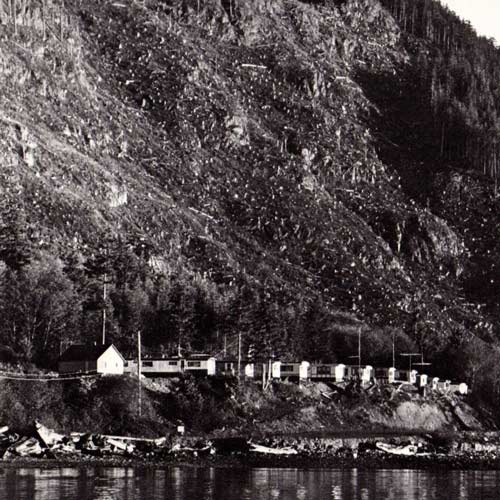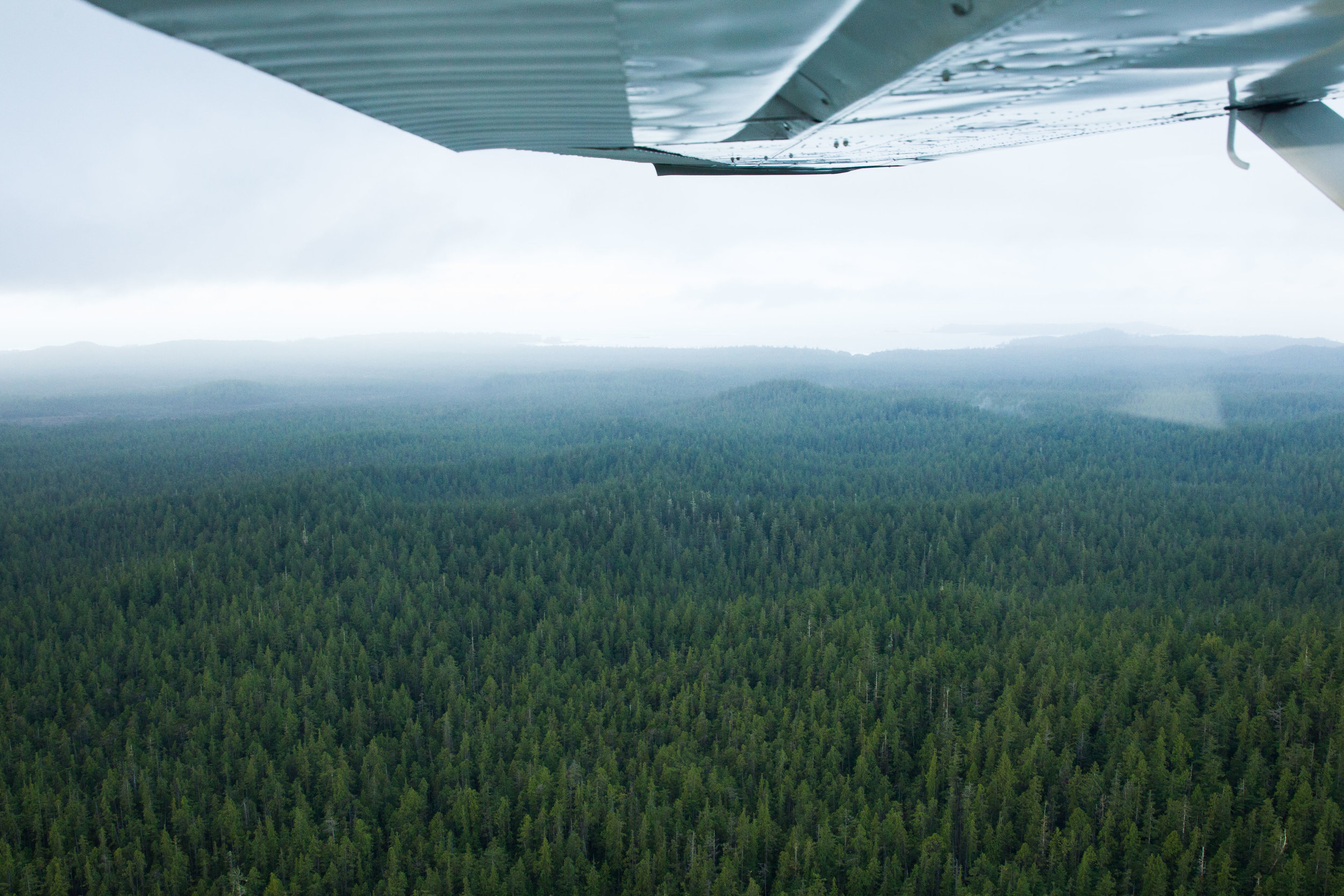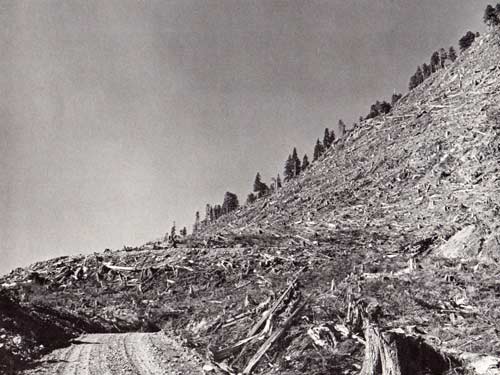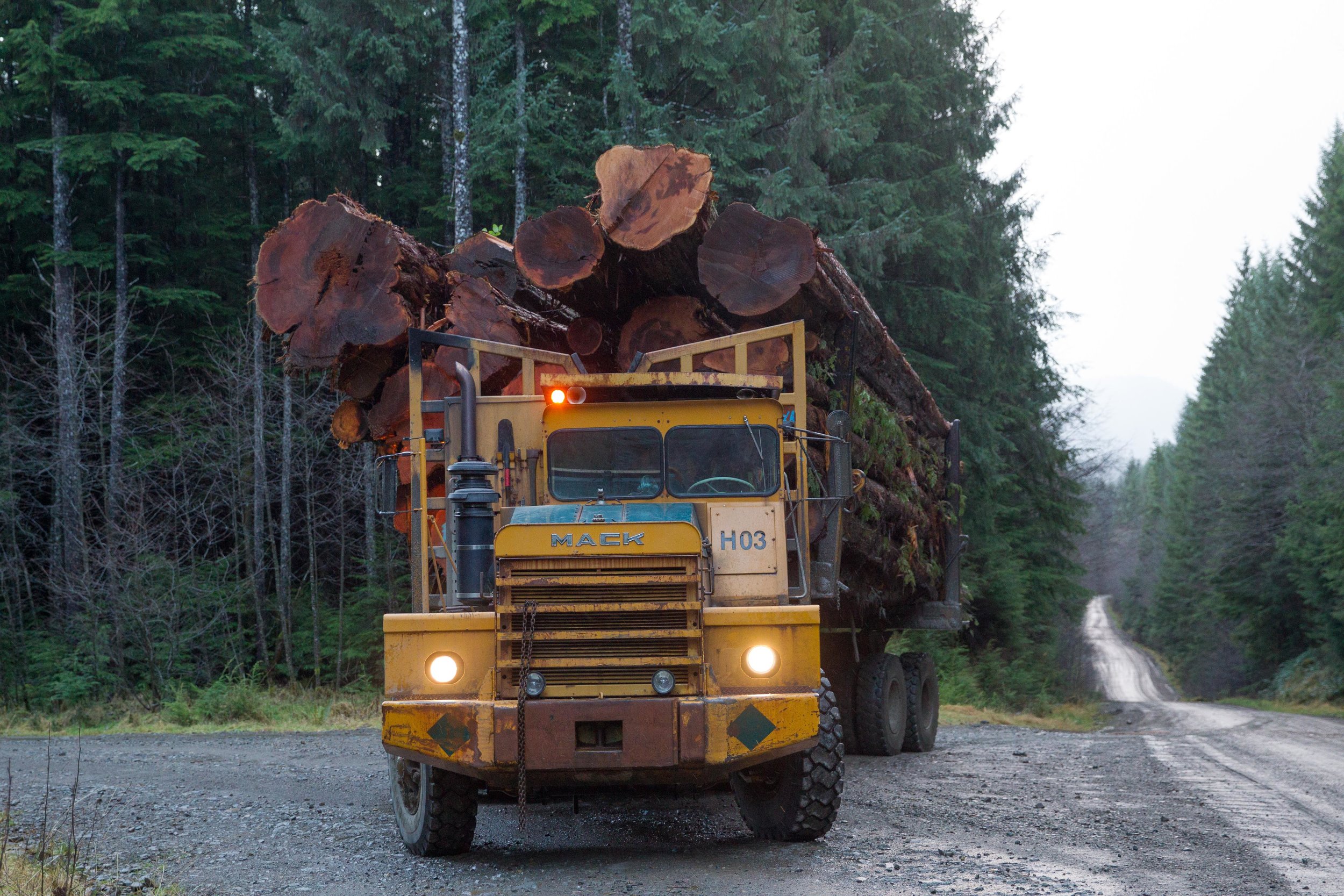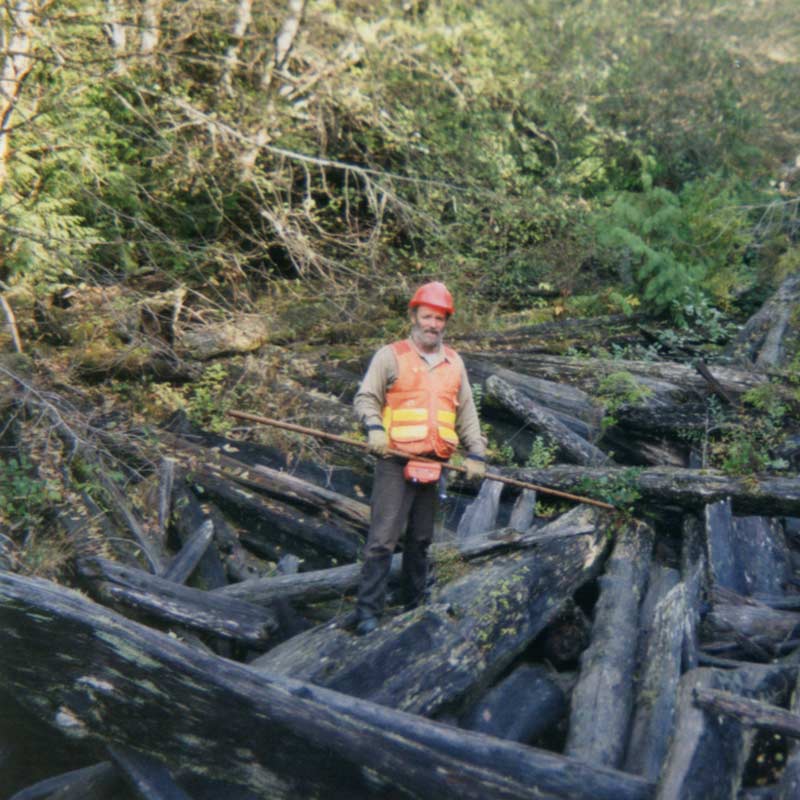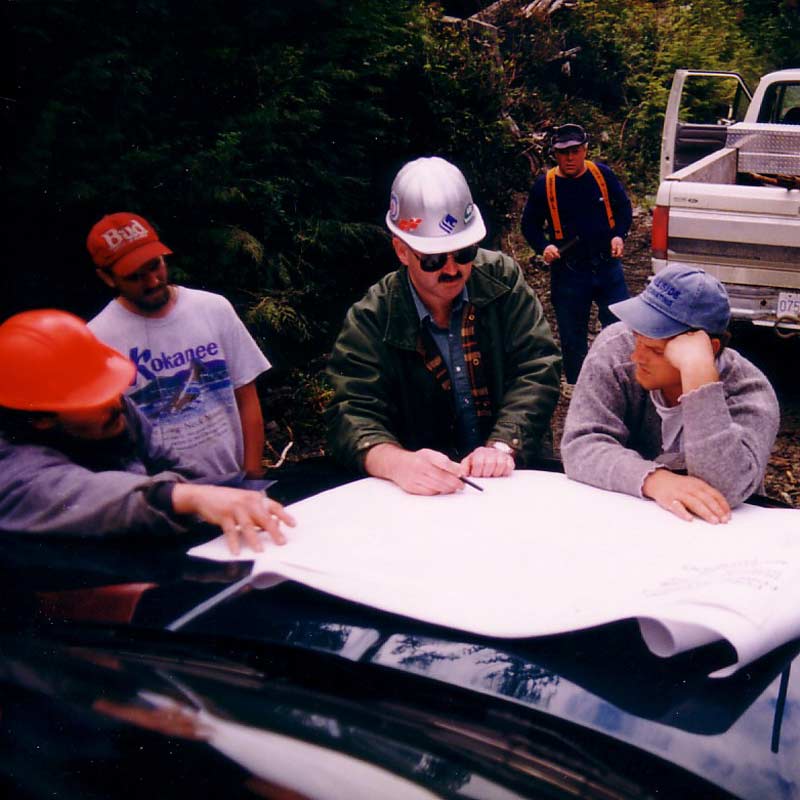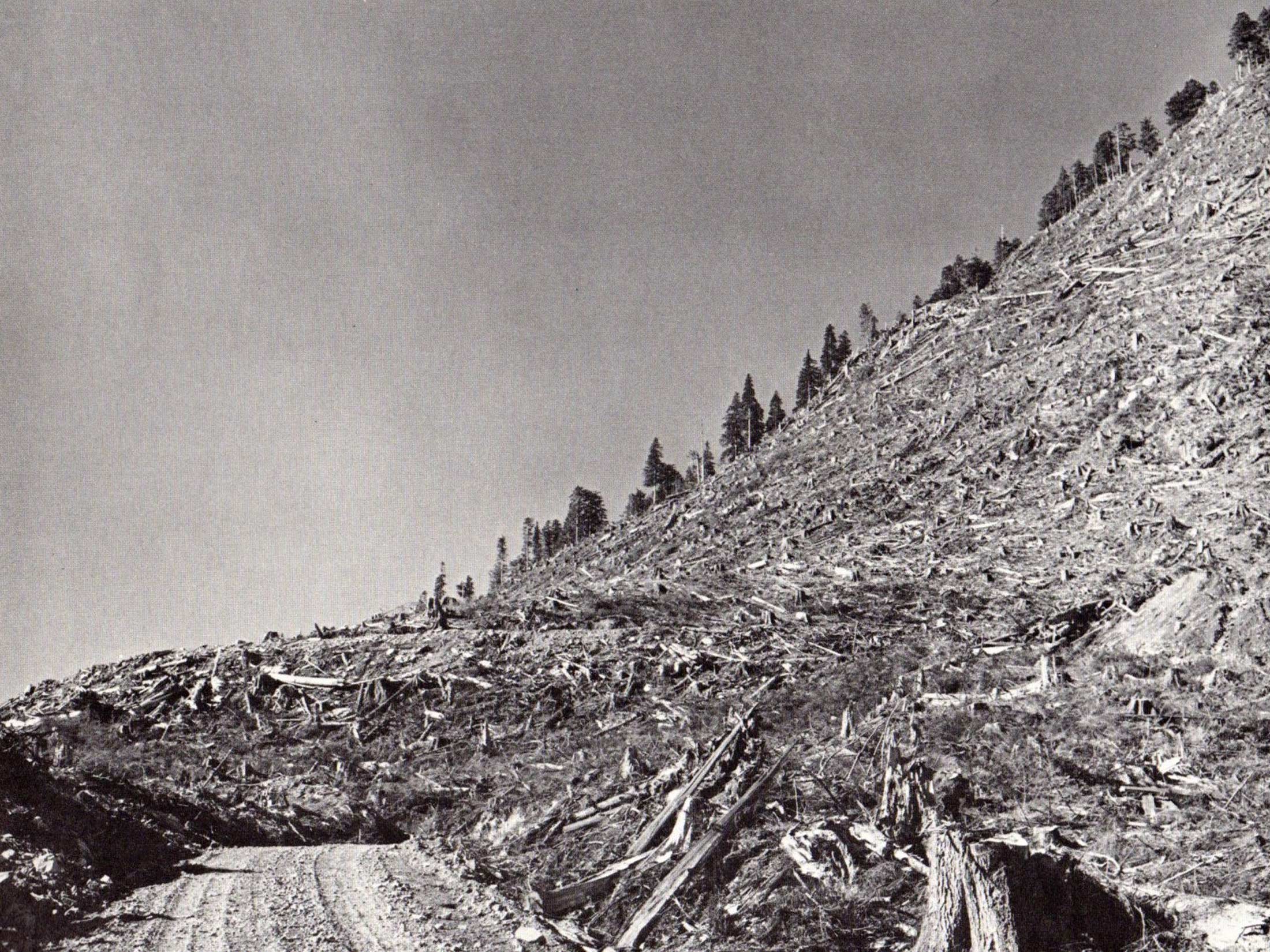
The "golden years" of unbridled west coast logging were not without consequence. Until the mid 1990’s no protection was afforded to stream ecosystems. As a result, vast amounts of vital freshwater salmonid habitat was destroyed.
For British Columbia’s timber industry, the forests of Vancouver Island were too rich to resist: giant spruce, Douglas-fir and red cedar trees fetched top dollar on the open market. On the Island’s remote Pacific coast, mechanized logging kicked into high gear in the 1950's and continued through the decades that followed.
"...it makes you a little melancholy to think that these cold green depths will shortly be reduced to ruin by monsters of machinery. The towering logger with the movie-star face, who stands beside us on the flat car admits a pang of remorse at the prospect of denuding this green valley, but what can you do about it? No logging, no work for loggers."
- Bruce Hutchison in the Comox Argus, 1933
Modern day Vancouver Island owes much of its early development to the logging industry; Island timber has been commercially harvested since the 1820’s. The seemingly endless supply of ancient trees and the incredible value they could command in the open market, combined with the proximity to the ocean for transport, earned Vancouver Island the reputation of a “Logger's Eden”. In the 1950’s, mechanized logging replaced traditional methods and the forestry companies were now able to level vast stretches of forest at an unprecedented rate. This unbridled development was not without consequence; up until the mid 1990’s no protection was afforded to stream ecosystems, as a result significant amounts of vital salmonid habitat and was degraded or destroyed.
For over a century, logging companies were not obligated to mitigate damage to salmon bearing streams and we are now living with the legacy of these practices today. Across Vancouver Island, there are vast stretches of dark, tightly spaced, single-species forests where diverse old-growth once stood. Many creeks and rivers are clogged with waste wood from logging operations that used them as dump sites, preventing fish from accessing upstream spawning grounds. Predictably, the removal of trees from the steep and saturated valley walls of our coastal watersheds resulted in devastating landslides, burying the rivers below in rock and debris. In other cases, streams were mined of their spawning gravel to be used for road construction or the creeks themselves were simply used as roads.
The only thing more integral to the fabric of coastal B.C. than the ancient forests is the Pacific salmon. nuučaanuł haḥuułi (Nuu-chah-nulth territory) is home to once legendary runs of suḥaa (Chinook), cuw̓it (coho), hink̓uuʔas (chum), miʕaat (sockeye), č̓aapi (pink), and steelhead. These coastal rivers and streams are a critical part of the salmon life cycle, and the loss of freshwater spawning and nursery habitat is a major threat to the survival of wild salmon populations. Decades of over-fishing, habitat destruction, and poor management have resulted in significant declines in wild salmon populations.

where Redd Fish comes in
Redd Fish Restoration Society was founded to address the loss of habitat and to preserve our wild fish stocks.
In the early 1990s, growing public awareness and concern for old-growth forests encouraged the government of British Columbia to institute unprecedented changes to land-use policies. The new policies drastically affected forestry in Clayoquot Sound and brought new focus to forestry practices and their impact on the environment.
Although many environmental organizations focus on changing industry practices, few work with local and regional communities to fix problems created by past practices and to find solutions to move into the future. Redd Fish Restoration Society was created in 1995 to fill this vacuum. Conceived as an apolitical organization, Redd Fish is dedicated to action-based projects designed to directly improve local salmonid habitat post-industry. Redd Fish works to promote sustainable development that truly incorporates social, economic, and environmental values, recognizing the importance of connecting people to the place they live and the resources around them.
The goal of restoration is not to return the watershed to a pre-altered state, but to help speed up the system's natural recovery. Good restoration design understands that there is an immense variety of factors governing any given ecosystem, and Redd Fish uses a holistic approach that recognizes the connection between ecosystems and the well-being of people. This method ensures that essential natural services and the systems supporting them are correctly valued, protected, and managed for the future by integrating the needs of society with scientific knowledge of ecological relationships.
Learn more about the Redd Fish vision, mission and values here.



